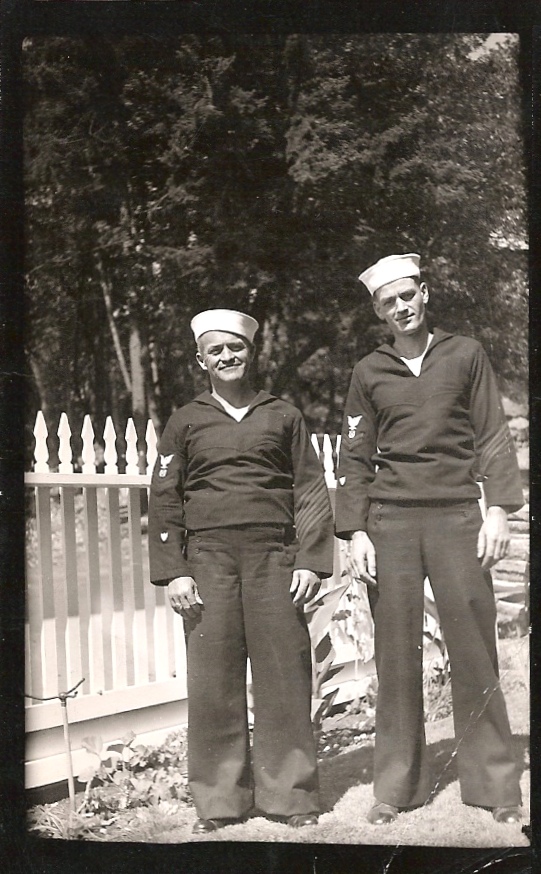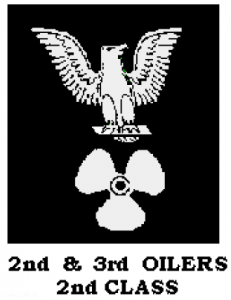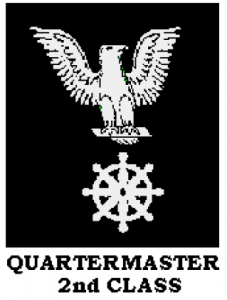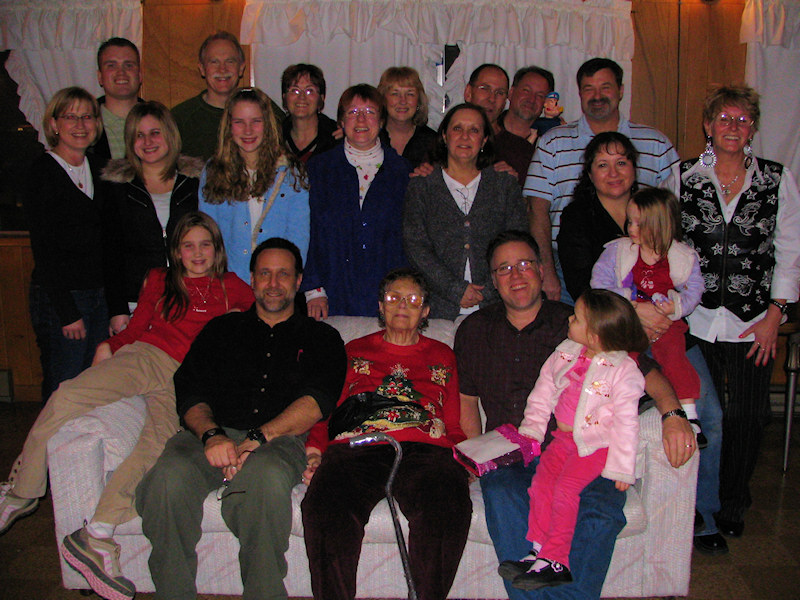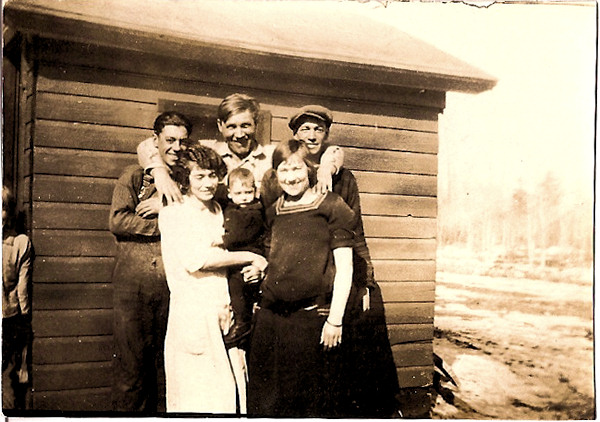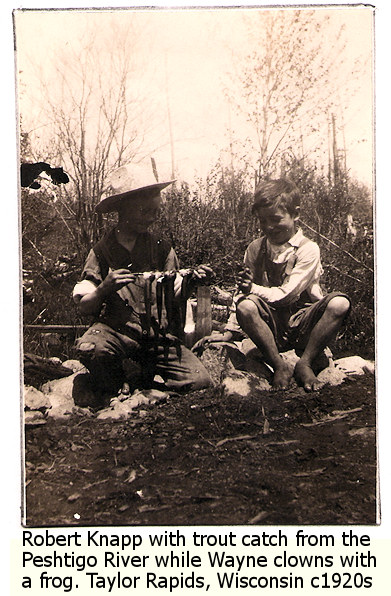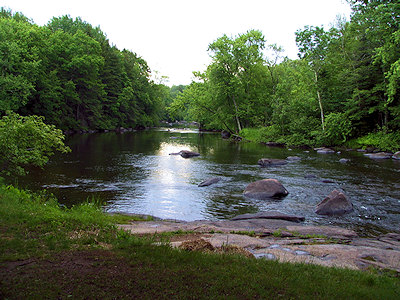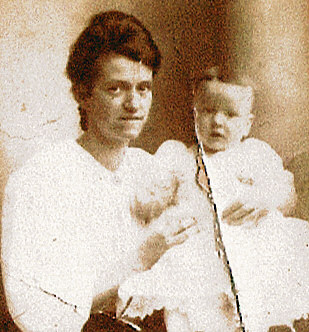In this photograph of my grandfather, Howard William West Sr. (tallest) and friend, based upon the US Coast Guard Military History PDF file of ratings, ranks, warrant, marks and insignia (PDF File), my grandfather was a Petty Officer, Quartermaster, 2nd Class or a second or third Oiler 2nd Class Petty Officer at the time of this photograph. I’m still hunting for his military records and I have no clear date on when this photograph was taken, though I may assume as it was while he was stationed in Friday Harbor in the San Juan Islands of Washington State circa 1935-1949. He was stationed at the San Diego Marine Base when he was a Marine, but this resembles the picket fence of other family portraits at the lighthouse on Friday Harbor where he was stationed for many years.
The two graphics are similar when viewed at this distance.
It is most likely, from the stories passed down, that he was a oiler, though he moved into security later in his military career as he shifted from Lighthouse Brigade, which eventually became Coast Guard, to Marines, and Navy, not in that order. The United States military, especially when it came to war on the water and along the coasts, was still evolving at the time.
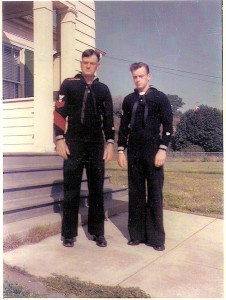 Compare that photograph and uniform to this one featuring my father, Howard West Jr, and his father, the senior Howard West still in the Coast Guard, a decade or more after the one above was taken. This image is from circa 1958 when my father entered the Coast Guard. He made it through boot camp and served less than 18 months, discharged for medical reasons.
Compare that photograph and uniform to this one featuring my father, Howard West Jr, and his father, the senior Howard West still in the Coast Guard, a decade or more after the one above was taken. This image is from circa 1958 when my father entered the Coast Guard. He made it through boot camp and served less than 18 months, discharged for medical reasons.
In that photograph, both are wearing the modern insignias for the Coast Guard, the bright red stripes and the distinguishing mark of the Coast Guard on the left forearm sleeve.
The US Coast Guard was born under President George Washington in August 1790 as the Revenue Marine or Revenue Cutter Service. In 1915, it merged with the US Life Saving Service. In 1939, the Lighthouse Service was also transferred into the Coast Guard, creating a single maritime service which included maritime navigation and lighthouses, vessel safety and more when the Bureau of Marine Inspection was also brought into the fold.
The US Navy was created in 1798, making the Coast Guard the oldest military organizations in the United States. Today, the Coast Guard is part of Homeland Security during peace time, not the Navy. If there is war, by presidential degree, the Coast Guard comes under the Navy Department.
The smaller shield near the cuff appeared to represent the two men as Master at Arms, though the document describes this as an insignia from 1908-1920, and that it is similar to the Chief Petty Officer rating badge. Later in the document, the 1930 Uniform Regulations states:
Coast Guard Distinguishing Mark: Every enlisted man of the Coast Guard will wear the distinguishing mark of the Coast Guard, a shield 1 inch in height, on the right arm midway between the top of the cuff and the elbow…Petty officers wearing rating badges with gold stripes shall wear this shield embroidered in gold.
Depending upon when this was taken, it is probably likely that the insignia on the lower right arm is this and not any special significance.
In another section of the document under Revenue Cutter Service – Petty Officer Rating Badges 1908-1915, it describes stripes on their sleeves representing the number of years of service, giving me another clue if this is right. Howard has three stripes on his sleeve. His friend has six.
In other research, I found that each stripe is given for four years of service, not each single year. Three stripes would represent twelve years, and six would be 24 years if this is true. My grandfather was a lifer in the military, lying about his age and joining before his 18th birthday. Howard West Sr. had no birth certificate and he was raised in a orphanage in Portland, Oregon, just one of many mysteries around him.
The document goes on to explain more about the history of the insignias but also the history of the officers designated as Master at Arms, Petty Officers, Warrant Officers, and so on. In 1920, the US Coast Guard adopted the US Navy ranks and rating scheme as they were under the auspice of the Navy.
In United States Army Service Uniform part of the Army history site, I found historical information that the first military service uniform was commissioned by General George Washington in October 1779:
…according to circumstances of supplies of Clothing, to fix and prescribe the uniform, as well with regard to color and facings as the cut of fashion of the Clothes to be worn by the troops of the respective States and regiments…prescribing blue coats with differing facings for the various state troops, artillery, artillery artificers and light dragoons.”
And in 1821, the Adjutant and Inspector General’s Office issued the following:
Dark blue is the National colour. When a different one is not expressly prescribed, all uniform coats, whether for officers or enlisted men, will be of that colour.
While the photograph of my grandfather is black and white, it is very likely his uniform color was blue, as were most at the time.
While I continue to investigate this, here are some resources I’ve found in my research.
- Military rank – Wikipedia
- United States Coast Guard – Wikipedia
- United States Coast Guard enlisted rate insignia – Wikipedia
- US Military Rank and Insignia Chart – Enlisted
- United States Army Service Uniform timeline and history
- Full text of “First Fleet The Story Of The U S Coast Guard At War” (rough OCR draft)
- United States Army Service Uniform
- United States Army Service Uniform
- USCGA Alumni Community – Acronyms, Jargon, and Terms
- Department of Defense – Officer Rank Insignia
- US Coast Guard Military Ranks – Lowest to Highest – Military Factor
- USCG CG-5421 Web Site – USCG Rank Insignias
- Traditions of the U.S. Coast Guard
Most Recent Articles by Lorelle VanFossen
- The Myths and Mysteries and Hunt for Nicholas Knapp
- The Perpetual Calendar
- GenSmarts: Reminder to Not Assume
- Gensmarts Saves Your Family History Research Life
- Digging Through Historical Newspapers Online

